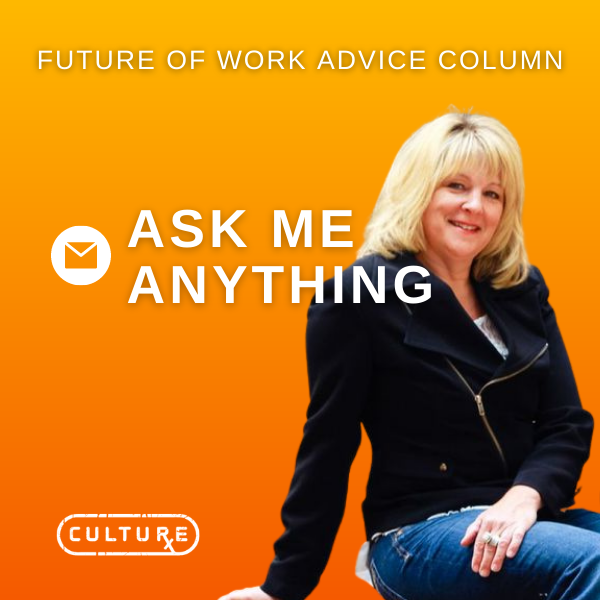
Ask Jody is an advice column written by Jody Thompson. Thompson is the Founding Principal of CultureRx. She is an international keynote speaker on the future of the workplace and has been featured on the covers of BusinessWeek, Workforce Management Magazine, HR Maginze, HR Executive Magazine, the New York Times, TIME Magazine, USA Today, The New Yorker, and on Good Morning America, CNBC, MSNBC, and CNN. She has co-authored two best-selling books on the modern workplace and contemporary management principles, Why Work Sucks and How to Fix It and Why Managing Sucks and How to Fix It.
To submit a question to Ask Jody, email info@gorowe.com. Questions will be kept confidential and may be edited for length.
Dear Jody,
How can our organization maintain its culture and give employees some of the things they’re looking for in terms of where they work? What can we do to figure out our future work plans?
Sincerely,
Hybrid HR Guy
Jody's Advice: Let’s start with a prediction: ‘The Great Resignation’ will continue until organizations realize that instead of preserving their existing work culture (which is what leaders say they want), they need to evolve their work culture to keep pace with contemporary society.
When business leaders say ‘being together’ they mean in the same physical location. And that assumes that when we’re communicating in other ways, we’re not ‘together’. That’s outdated thinking. What brings people together is a crystal-clear focus on the measurable results that each person and each team need to achieve and are held accountable for.
Start with the work first, and let the people choose the best location to achieve their objectives.
What Does Your Work Culture Say About Your Company?
Are you operating in an employee empowering and equitable way? Take a 2-minute quiz and find out.
Organizations can benefit by thinking about the realities of work in terms of traditional and contemporary currencies.
Work Reality #1: The traditional currencies are time and location. When work is a place where you go during the hours you owe your employer (1950s traditional approach), leadership and management use policies and rules to create a standardized, equal, and ‘fair’ employee experience. The belief is that this equality for all environment will lead to motivated, efficient, and effective employees serving a satisfied customer.
An example of this equality for all environment would be the hybrid workplace. In a hybrid workplace, some companies will allow everyone to work three days in the office and two days at home (or something similar). But does this approach work for every single role in an organization, and for every single week? Are we treating people the same regardless of need (equal), or are we treating people differently depending on need (equality)?
With the equality for all environment, managers are still directing when and where people work. And it will never end up truly being fair. Business needs shift and change. People have roles that do not fit nicely into the hybrid box. And what seemed equal is now creating an inherently unequal experience.
Work Reality #2: The contemporary currencies of work are measurable results. When work is something that you do rather than a place you go, leadership and management use clear, objective, measurable results for the customer, and focus on empowering their workforce through an equity for all environment. The belief here is that the company does not own their employees’ time, thus they do not micromanage how that time is used – only when/where it is used.
An equitable experience – which is critical for today’s workforce – puts everyone on a level playing field of autonomy and accountability. Being held accountable for measurable results for your role is standard. Add to that the autonomy to make the choice to work when and where you work best – every single day. No judgment about who you are or how you choose to live your life.
The key difference between the work realities is equity versus equality. Although both promote fairness, equality achieves this through treating everyone the same regardless of need, while equity achieves this through treating people differently dependent on need. Building a culture of equity is good for people, businesses, and the community. And that’s built on a platform of autonomy and accountability for each person.
Your work culture guide,
Jody
